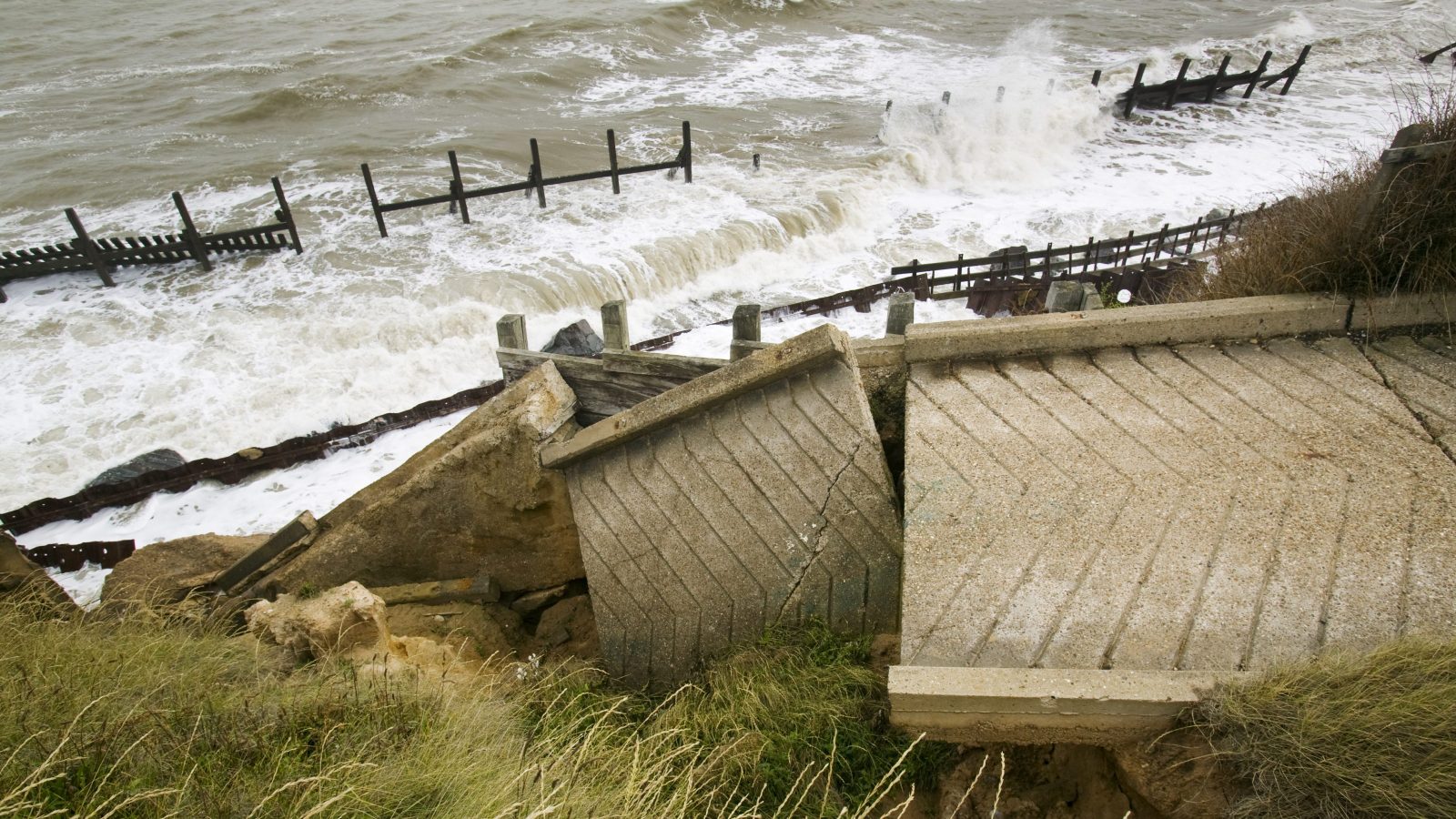Last week, President Joe Biden unveiled a $2 trillion infrastructure plan that, if passed by Congress, would protect the U.S. from climate change and prepare its economy for a transition to clean energy. The plan has a little something for just about everyone — out-of-work fossil fuel workers, public housing advocates, lovers of research and development — but it almost entirely avoids mentioning a looming crisis. Biden’s plan barely mentions managed retreat, a term that refers to the coordinated movement of communities away from coastlines and other vulnerable areas as sea levels rise and climate disasters worsen. The White House infrastructure plan included just one sentence about it, saying the American Jobs Plan will provide “transition and relocation assistance to support community-led transitions for the most vulnerable tribal communities.”
In the coming decades, vulnerable tribes will comprise a tiny fraction of the communities that will need relocation help. Studies show that 13 million Americans could become displaced by rising sea levels and $1 trillion worth of homes and commercial property could be inundated by the end of the century. Southeastern Louisiana, Miami, and New York City are some of the spots that will see precipitous sea-level rise before then. The National Flood Insurance Program, the federally funded insurance program that is one of Congress’ best tools for making people understand flood risks, is mismanaged and has been bankrupted by years of catastrophic flooding events. State governments don’t have nearly enough policies in place to deter people from building and buying homes in flood zones. And federal buyout programs that provide incentives for people to leave their homes are limited and tend to favor wealthier homeowners.
Managed retreat is a strategy few politicians, regardless of political party, want to advocate for, even as climate adaptation in general has become an increasingly integral part of the national conversation. In some cases, politicians haven’t just been slow to embrace retreat, they’ve resolutely marched in the opposite direction.
“I think both parties want to avoid that issue for as long as possible,” Carlos Curbelo, a Republican and former U.S. representative for south Florida, told Grist in early March. “It is a bipartisan issue in the sense that no party really wants to talk about it.”
Senate Majority Leader Chuck Schumer, one of the most powerful Democrats in Congress, is one of those politicians with their heads in the sand. The New Yorker has positioned himself as a climate hawk, directing Senate committees to start holding hearings on the climate crisis and calling on Biden to declare a climate emergency. But Schumer has also obstructed efforts to warn people away from flood-prone areas.
Last week, the Federal Emergency Management Agency, which administers the National Flood Insurance Program, announced new flood insurance rates that will more realistically reflect the true risks of insuring homes in flood zones when they go into effect in the fall and next spring. As it currently stands, the program’s heavily subsidized flood insurance lulls homeowners into a false sense of security. If folks knew the true cost of insuring their home against flood risk, they might not buy it in the first place. Bumping up rates would also discourage construction of new buildings in high-risk zones. But last month, as FEMA prepared to announce its overhaul, Schumer stepped in to object to the reforms, which would increase insurance costs for a fraction of Americans.
“FEMA shouldn’t be rushing to overhaul their process and risk dramatically increasing premiums on middle-class and working-class families without first consulting with Congress and the communities at greatest risk to the effects of climate change,” Alex Nguyen, a spokesperson for Senator Schumer, said in a statement. But FEMA’s Risk Rating 2.0 will actually lower insurance rates for 23 percent of households, and most of the rest will see increases no higher than $20 per month. Just 4 percent will see larger changes to their premiums. That 4 percent will mostly be composed of higher-value homeowners in high-risk areas — like people living in the Hamptons, where the median price of a home in 2020 was $1.2 million. Schumer’s refusal to embrace even a modest step to discourage people from coastal living highlights the political muck miring managed retreat.
Biden and Schumer aren’t the only politicians shying away from the need for managed retreat — it’s also a taboo subject in red states. In Florida, a state where rampant sea-level rise is already a facet of everyday life, Republican state legislators recently unveiled a suite of measures intended to fend off rising seas. The bills will direct $100 million per year over the next two years toward protections against sea-level rise and flooding. As a result, homeowners who pay to raise their houses higher off the ground will get a tax break. Local governments will get funding to come up with targeted strategies to deal with impending rise. The Florida government, in partnership with the University of South Florida, will establish a Flood Hub for Applied Research, which will exclusively focus on the state’s exposure to flooding and how to reduce those risks. But managed retreat is nowhere to be found on the menu of risk mitigation strategies.
Preston Robertson, president and CEO of the Florida Wildlife Federation, told Grist in March that both political parties in Florida are loath to talk retreat because of the financial implications. “How in the world do you do that when there are trillions of dollars in property just in Miami-Dade alone?” Robertson asked. “It’s almost impossible to get your mind around the fact that if the seas keep rising, those residences and commercial structures are going to become uninhabitable.”
Americans are used to confronting extreme weather and flooding with large-scale interventions — sea walls to keep the ocean at bay, pumps to dry our streets out, stilts to keep our houses above the flood line. When a hurricane or a wildfire destroys a community, officials talk about recovery, not conceding defeat. “Americans don’t like to lose,” Yuliya Panfil, director of a housing reform program at the progressive think tank New America, told Grist. “Retreat sounds like losing.”
It’s no surprise that politicians, who typically think in two-, four-, and six-year increments, are skirting the topic of managed retreat, which requires much longer-term planning. A 2019 Columbia University report found that “the inclination to avoid retreat is strong even in cities that have undergone a destructive climate disaster.” Progressive mayors have signed climate bills into law that don’t adequately plan for retreat. Efforts to reform the National Flood Insurance Program ran into roadblocks long before Chuck Schumer got involved. The federal government under former President Barack Obama temporarily toyed with establishing a federal framework for managed retreat but ended up dropping it. Alice Hill, former special assistant to Obama, called it a “third rail.”
“It’s really politically difficult to ask people to abandon their homes,” Panfil said. “Particularly in some of these coastal areas, these are often people’s retirement dreams and they’ve been saving for 30 years to buy themselves a home on the water.”
A few politicians at the local and state level are bucking the trend and touching the third rail. In the Florida Keys, local officials told residents in 2019 that some areas would be lost to the water forever. “As much as we love the Keys, there’s going to be a time when it’s going to be less population,” Rhonda Haag, the county’s sustainability director, said. She was saying the quiet part out loud: It was time for people to move.
And in southern California, state senator Ben Allen, a Democrat, introduced legislation in March that could become a pilot managed retreat project for the rest of the country. The bill would establish a loan program that would provide funds for California municipalities and counties so they can afford to buy up vulnerable coastal properties. Then, the county would rent them out to Californians while the properties are still desirable and use the money to pay off the loans. It’s essentially an extended-release buy-out program for at-risk properties. There’s a good chance that the bill will become law. If it works, other states could follow suit.
When the federal government inevitably starts to scramble for solutions to sea-level rise, it’ll likely look to these places for evidence of what works and what doesn’t. But until more politicians stop treating managed retreat as a third rail and start thinking about it as a lifeline, government plans to adapt to climate change will fall short.




